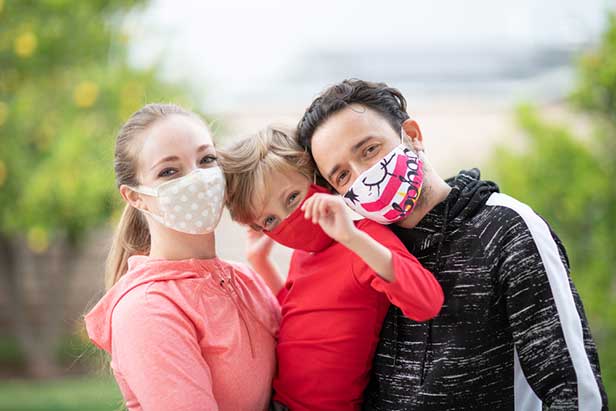Face Masks Could Soon Get Certification Labels
ASTM International, which sets standards for a range of products, is working with scientists and manufacturers to develop guidelines for filtration efficiency of cloth masks and other face coverings.
Masks may soon be getting a set of standards to help consumers determine how efficient each type of face covering is at filtration. ASTM International, the organization that sets technical standards for products ranging from amusement park rides to drones, is working with industry and government partners to create the guidelines. Once those standards are agreed upon, masks that meet them would bear a label certifying that.

The standards are needed, experts say, because there’s a lot of variation in how well face coverings block particles from passing through. N95 respirators are required to filter out 95% of all airborne particles larger than 0.3 microns. But cloth masks that are available to the general public don’t have to meet any particular filtration standards. Back in June, the World Health Organization published recommendations for a multi-fabric, three-layer mask, but that design doesn’t necessarily match what is available for sale online and at retail.
“We want everyone to be wearing masks … [but] there’s a huge variability how effective cloth masks are,” Linsey Marr, a civil and environmental engineer and aerosols expert at Virginia Tech told Quartz. “Things are ad hoc right now, and the public has no guidance.”
The task group writing the face mask standards has not yet reached a consensus on how effective the masks should be at trapping particles, according to Jennifer Marshall, program manager for public safety standards coordination at the National Institute of Standards and Technology (NIST). “One of the concerns is how much is leaked through and around the barrier and the best way to measure it,” she told Quartz. Usability is also key. “There’s a balance to blocking particulates and breathability, and ultimately masks need to be comfortable and wearable.”
Those are all factors suppliers in the promotional products industry considered as they developed face masks early on in the pandemic, but different fabrics and fits have yielded a wide variety of styles with no universal guidelines.
The face covering standards will identify which labs are certified to run tests and set requirements for design and labeling, according to Marshall. They may also include type and durability of material and what portion of the face the masks should cover. ASTM began working on mask guidelines back in July, and the new standards could be published before the end of 2020, Marshall said.
The mask standards are being discussed by a group of about 50 scientists, industrial hygienists, government officials, special interest groups and manufacturers, according to the Washington Post. Employees from 3M, maker of N95 respirators, have been involved in the discussions.
Americans have been scrambling for assurances of how effective various face coverings are at blocking particles and slowing the spread of the coronavirus, as evidenced by how a viral study out of Duke University this summer put a damper on neck gaiter sales before later studies showed that face covering efficiency had more to do with the type and number of layers of fabric, rather than the form factor. An agreed-upon set of standards with associated labeling requirements could help cut down on confusion and panic.
“Whether it’s a standard or whether it’s something equivalent to the Consumer Reports rating [of] good, better or best, it is probably useful because otherwise people are lost,” Philip Harber, a professor of public health at the University of Arizona told the Washington Post. He added that the standards should be “very, very, very simple,” given some Americans’ hostility toward masks.